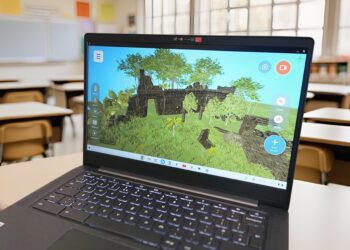The first two weeks of school are busy. You’re getting into the back-to-school mindset, building classroom community, practicing classroom routines and so much more. You’re also working to understand where students are in their learning and how to facilitate individual growth. Formative assessment is a critical way to monitor student learning – especially at the beginning of the school year – and to provide ongoing feedback throughout the rest of the year.
Are you curious how to use formative assessment to shape the direction and development of learners? Here are our tips for incorporating quick, effective formative strategies in the first two weeks of school and beyond:
1. Use checks for understanding.
Checking for student understanding is essential to formative assessment. There are a variety of ways to check for understanding to gather evidence of student learning, such as:
- Summaries and reflections: Students stop and reflect on what they’ve learned. Summaries and reflections can be written or verbal. They require students to use content-specific language.
- Lists, charts and graphic organizers: Students can organize information in order to make connections and record relationships among ideas or concepts.
- Visual representations: Students explain what they’ve learned with drawings and pictures. Visual representations are helpful for accommodating different learning styles, needs and preferences.
- Exit tickets: Students respond to a question, solve a problem or summarize their understanding on an exit ticket after a lesson or activity. You can read these in a few minutes to readily sort students into groups (e.g., skill not mastered, ready to apply or ready to move forward).
2. Facilitate student conversations.
Provide students with opportunities to work together and share what they’ve learned with peers. During a lesson, you can pair students based on level of mastery. As students work together, they can provide feedback and support each other. You can circulate the room to monitor conversations and provide in-the-moment feedback to students while they work.
3. Keep track of data.
When you use formative assessments, keep track of the data you collect. An easy way to observe and assess student growth is by walking around your room with a clipboard and sticky notes/paper. Jot down when you notice that a student acquires a new skill or when another student struggles. Keep track of these notes – maybe in a folder for each child. Then, use this data to inform 1:1, small group or whole class instruction.
4. Provide quick, meaningful feedback.
Using your organized data, give students learning-focused feedback and time to practice using it. Doing so will allow students to move forward in their learning. Note: Feedback can come from various sources. Teachers provide feedback, peers provide feedback and learners are taught to self-assess and generate their own feedback.
5. Empower kids to set and monitor goals.
Formative assessment will be more successful if students are engaged and invested in learning. Allow students the opportunity to create and monitor their own learning goals. Goal-setting helps kids be more open to feedback, and it builds a culture of learning where students support themselves and their peers.
Formative assessment is the key to academic growth all year long, as it allows students to elicit evidence of learning. Therefore, it’s important to plan effective classroom activities that allow students to demonstrate their understanding. Educators can use that information to provide feedback that moves students forward in their learning.







